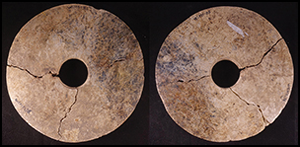Crossref Citations
This article has been cited by the following publications. This list is generated based on data provided by
Crossref.
Zhang, Kexin
Zhang, Yaxu
Zhao, Jing
Zhao, Zhanrui
Zhao, Meng
Zhao, Xichen
and
Luo, Hongjie
2023.
Corrosion analysis of unearthed jade from Daye Zhen Tomb of Northern Zhou Dynasty.
Heritage Science,
Vol. 11,
Issue. 1,
Wang, Rong
and
Li, Yifan
2024.
Encyclopedia of Archaeology (Second Edition).
p.
454.
Zhao, Xiaohan
Zhao, Ye
Qin, Xiaoli
and
Wang, Rong
2024.
On Liangzhu Culture Tremolite-Tempered Pottery: Social complexity, logistical networks and cross-craft interaction in Neolithic China.
Journal of Archaeological Science,
Vol. 167,
Issue. ,
p.
106000.
Ma, Shuwen
Zhang, Jian
Du, Wei
Zheng, Longlong
Cui, Tianxing
and
Jin, Songan
2024.
The Identification of Jade Work Sawing Microwear Marks and Archaeological Implications for Prehistoric Technology in North China.
Lithic Technology,
Vol. 49,
Issue. 4,
p.
330.
Xu, Chujing
Liu, Jiancheng
Wang, Yunpeng
Ran, Honglin
Wu, Haoze
Fang, Hui
and
Ma, Qinglin
2025.
The deterioration structure of tremolite jade artifacts from the Sanxingdui sacrificial pits dated to the Shang Dynasty in Guanghan, Sichuan, China.
npj Heritage Science,
Vol. 13,
Issue. 1,
Zheng, Xiaoqu
Yang, Fan
Sun, Mingli
and
Chen, Qinyu
2025.
Food Production and Landscape Reconstruction of Liangzhu Culture Village (5000–4600 B.P.)—Archaeobotanical Evidence from the Site of Zhumucun, Southern China.
Quaternary,
Vol. 8,
Issue. 2,
p.
21.
Zheng, Tongtong
and
Wei, Wenbin
2025.
Liángzhū Tourism-Archaeological Park: Evidence of Neolithic Water Management in the Taihu Lake Basin, China.
L'Anthropologie,
Vol. 129,
Issue. 1,
p.
103348.
